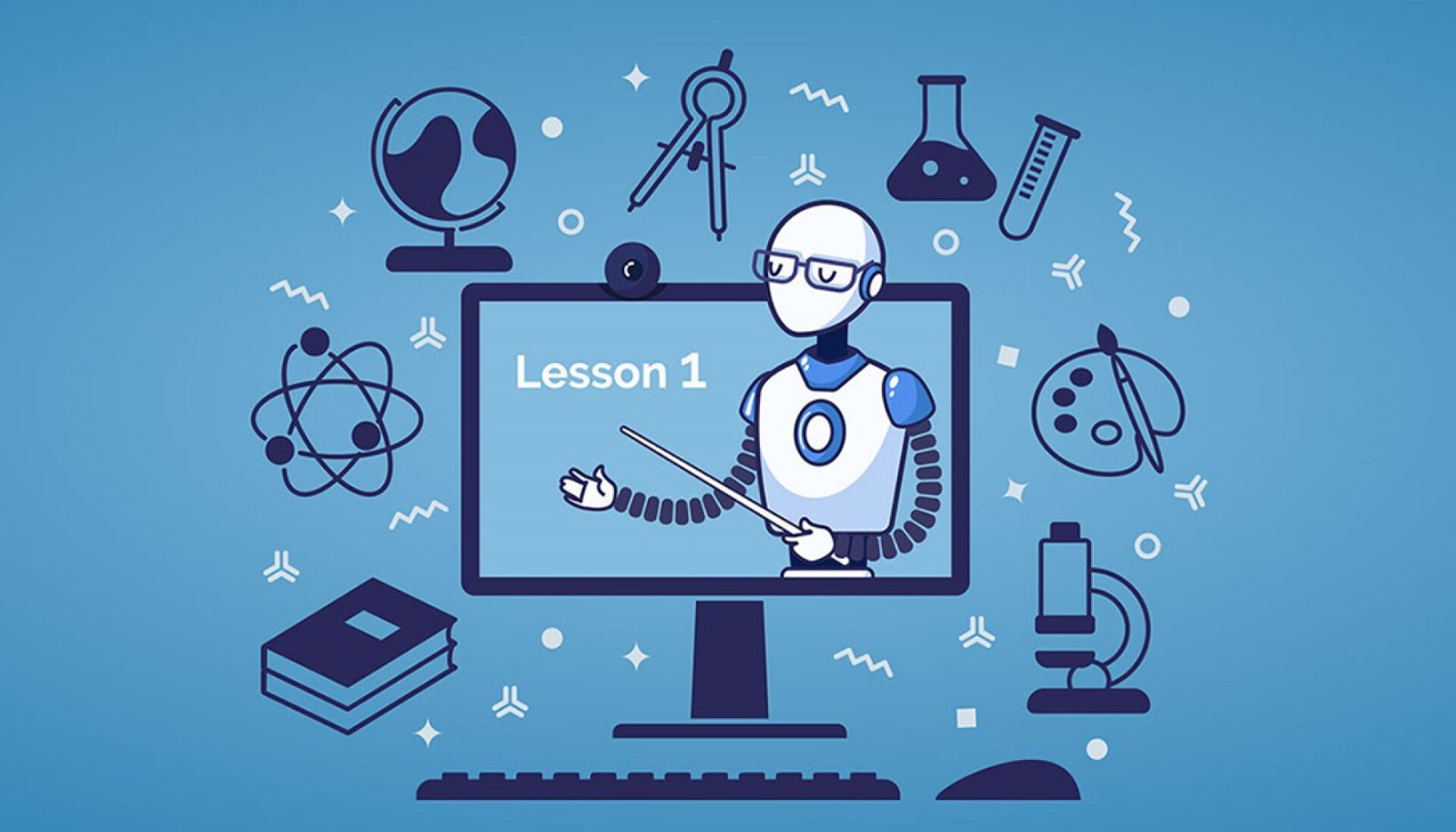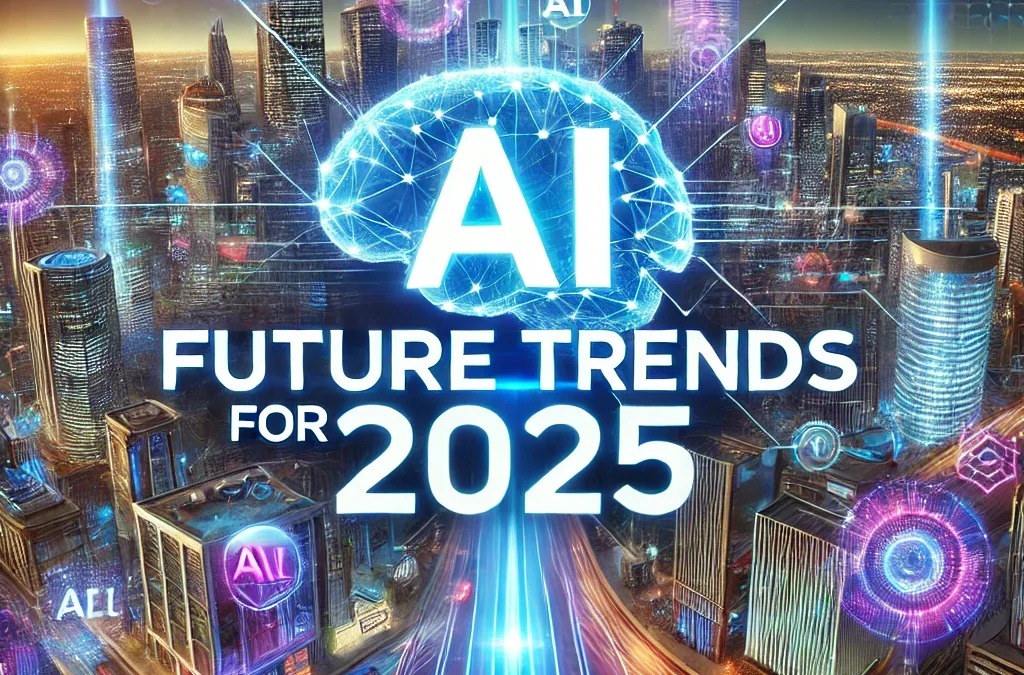
AI in Education: Personalized Learning or Digital Dependence?
Artificial Intelligence is transforming education by offering personalized learning, adaptive teaching methods, and global accessibility. While AI enhances efficiency, engagement, and individualized progress tracking, it also raises concerns about over-reliance, data privacy, and reduced human interaction. This article explores whether AI empowers students and teachers or fosters a new form of digital dependence in modern classrooms.
✨ Raghav Jain

The Rise of AI in Education
Artificial Intelligence, once a futuristic concept confined to science fiction, has rapidly become an integral part of modern education systems. From virtual tutors and adaptive learning software to AI-driven administrative automation, its presence is both widespread and transformative. AI in education is not merely about digitizing textbooks; it’s about redefining how students learn, how teachers teach, and how education systems function.
One of the most significant contributions of AI is personalized learning. Traditional classrooms often operate under a “one-size-fits-all” approach, where a single curriculum and teaching pace are applied to a diverse group of students. However, every learner processes information differently—some grasp concepts quickly, while others need more time or alternative methods. AI algorithms can analyze vast amounts of data about a student’s progress, engagement, and learning style to create a tailored educational experience.
For instance, platforms like Khan Academy or Coursera use machine learning to recommend courses and content that match a learner’s interests and progress. Similarly, AI-powered tools like DreamBox or Socratic by Google adapt difficulty levels in real-time, ensuring that each student learns at an optimal pace. This adaptive approach allows struggling students to receive additional support while advanced learners can move ahead without being held back.
AI also assists teachers by automating routine tasks such as grading, attendance tracking, and generating progress reports. By relieving educators of these administrative burdens, AI enables them to focus more on interactive teaching and emotional engagement—areas where human touch remains irreplaceable. Furthermore, predictive analytics can help identify at-risk students early, allowing for timely intervention before academic decline or dropout occurs.
Another crucial application lies in special education. AI-driven tools can provide personalized assistance to students with learning disabilities. Speech recognition and natural language processing technologies, for example, help children with dyslexia or speech impairments by converting text to speech or vice versa. Moreover, AI tutors are available 24/7, making learning accessible beyond classroom hours and geographical boundaries.
The integration of AI in education also plays a pivotal role in global accessibility. Language translation software and real-time captioning tools break down linguistic barriers, allowing students worldwide to access quality education materials in their native tongues. AI chatbots can guide students through coursework, clarify doubts instantly, and provide motivation or reminders—all of which were previously limited to face-to-face teacher interactions.
Despite these advantages, the growth of AI in education has sparked debates about digital dependence. While personalized learning promotes efficiency and engagement, excessive reliance on AI may gradually weaken critical human abilities such as creativity, problem-solving, and interpersonal communication. Students might prefer interacting with machines over teachers, reducing the emotional and social aspects of learning.
Moreover, AI systems, despite their intelligence, lack empathy and moral reasoning. They can deliver information effectively but cannot replicate the inspiration and mentorship that passionate educators provide. A student’s holistic development depends on emotional intelligence and moral guidance—areas where AI remains insufficient.
Another challenge is data privacy. Personalized learning requires the collection of massive amounts of data—student performance, behavior, preferences, and even biometric information. Without stringent safeguards, such sensitive data could be misused or exposed. The ethical dilemma surrounding surveillance, algorithmic bias, and the commercialization of educational data adds further complexity.
Furthermore, the digital divide continues to be a significant concern. While affluent schools and urban students benefit from advanced AI tools, underprivileged students in rural or low-income regions often lack access to the necessary technology and internet connectivity. This gap could widen educational inequality instead of reducing it.
AI’s increasing presence also raises questions about the future of teachers. Some fear that automation may replace educators altogether, leading to job insecurity. However, experts argue that AI is more likely to augment rather than replace human teachers. By taking over repetitive tasks, AI enables educators to focus on creativity, empathy, and complex problem-solving—skills that machines cannot replicate.
Personalized Learning: A Revolution in the Making (Approx. 1000 words)
At its core, personalized learning through AI aims to make education student-centric rather than teacher-led. Traditional methods treat every student equally, but equality is not the same as equity. Some learners may require visual content, others may prefer auditory explanations, while some excel through hands-on experience. AI-driven systems can recognize these patterns through data analytics and adjust teaching strategies accordingly.
Take, for example, Intelligent Tutoring Systems (ITS)—AI-based platforms that emulate one-on-one tutoring. These systems assess a learner’s strengths, weaknesses, and emotional state to provide customized content. A mathematics AI tutor might identify a student’s difficulty in fractions and provide targeted exercises and real-world examples until mastery is achieved. The goal is not only to improve performance but also to nurture confidence and motivation.
AI can also analyze attention spans and emotional engagement through eye-tracking or facial recognition (with ethical oversight). If a student appears disengaged or confused, the system can modify its teaching style—perhaps switching from text explanations to video or gamified learning. Such adaptability is beyond the capability of most traditional classrooms.
Moreover, AI facilitates lifelong learning. In a rapidly changing job market, reskilling and continuous education are essential. AI-driven platforms provide flexible, personalized learning paths for professionals, allowing them to update skills at their convenience. Microlearning modules, adaptive quizzes, and AI mentors ensure that learning never stops, regardless of age or profession.
However, this hyper-personalized approach can have downsides. One major concern is over-customization, which can create intellectual bubbles. When algorithms continuously feed learners only what aligns with their strengths or interests, students may miss exposure to diverse perspectives or challenging material. Just as social media algorithms can trap users in echo chambers, AI in education might unintentionally narrow intellectual growth.
Another issue is the psychological impact of digital dependence. Students who rely too heavily on AI tutors may lose patience, persistence, or problem-solving resilience when faced with difficulties outside digital environments. The instant feedback loop that AI provides can diminish students’ ability to cope with delayed rewards or ambiguity—essential life skills for adulthood.
Teachers, too, must adapt to this changing landscape. While AI enhances efficiency, it cannot replace the intuition and empathy that define great educators. The future classroom must strike a balance between automation and authenticity—where AI acts as an assistant, not a replacement. Human teachers can interpret emotions, motivate through storytelling, and connect with students on a deeply personal level—capabilities that algorithms cannot simulate.
To prevent digital dependence, digital literacy and ethics education must be integrated into curricula. Students should understand how AI systems work, what biases they may carry, and how to use them responsibly. Educators, too, require proper training to leverage AI tools without surrendering their autonomy.
The solution lies in AI-human collaboration. AI can provide data-driven insights—such as identifying learning gaps or predicting performance—but teachers must interpret these insights with empathy and context. For example, if AI suggests that a student is underperforming, only a teacher can discern whether it’s due to lack of understanding, personal issues, or emotional distress.
In the coming years, AI will continue to shape education in ways unimaginable today. Virtual reality classrooms, AI mentors, voice-based assessments, and blockchain-certified learning credentials are already under development. But as education becomes more automated, it’s vital to preserve the essence of humanity in learning—the curiosity, empathy, and creativity that define intellectual growth.
Artificial Intelligence (AI) has moved far beyond the realm of futuristic fantasy—it has entered classrooms, lecture halls, and learning platforms with revolutionary impact. Today, it’s no longer unusual for a student to interact with a virtual tutor, for homework to be graded by algorithms, or for lesson plans to adapt automatically to an individual learner’s pace. In essence, AI is dismantling the rigid, one-size-fits-all structure of traditional education and replacing it with something dynamic, data-driven, and deeply personal. The concept of personalized learning, once an educational dream, is now being realized through AI’s power to process and analyze vast amounts of student data in real-time. Intelligent systems assess performance, identify strengths and weaknesses, track engagement levels, and modify the learning journey accordingly. For instance, AI-based platforms like DreamBox, Coursera, or Khan Academy use machine learning algorithms to recommend suitable topics, adjust question difficulty, and even predict when a student is likely to lose interest. This creates a customized roadmap for each learner—one that maximizes understanding and minimizes frustration. Such flexibility is particularly vital in large classrooms, where individual attention is difficult for human teachers to maintain consistently.
Beyond mere personalization, AI is enhancing accessibility and inclusion in education. Students with disabilities benefit from voice recognition tools, text-to-speech systems, and real-time language translation. AI can convert spoken words into text for hearing-impaired students or simplify reading materials for those with learning difficulties such as dyslexia. It transcends geographical and linguistic boundaries, allowing students from rural or underprivileged areas to access quality education through digital means. Moreover, AI-driven chatbots, available 24/7, provide instant academic support, answer questions, and offer feedback—services that were previously limited to teacher office hours. This democratization of education, powered by AI, ensures that learning is no longer confined by time zones, classroom walls, or even economic status.
For educators, AI acts as both an assistant and a mentor. It automates tedious tasks such as grading assignments, marking attendance, and analyzing student data—freeing teachers to focus on creative and interpersonal aspects of teaching. Predictive analytics can alert teachers to potential academic decline or emotional distress, allowing timely interventions. For administrators, AI streamlines operations, optimizes resource allocation, and even helps in curriculum design by identifying what teaching methods work best across different student demographics. In short, AI’s role in education is not just supportive but transformative, helping shift focus from rote memorization to deeper understanding and skill-building.
However, this technological renaissance brings forth profound questions about digital dependence. While AI-driven personalization promises individualized attention, it also risks reducing learning to an algorithmic experience devoid of emotional and moral context. Students may start viewing education as a purely transactional process—one in which machines dictate progress and efficiency takes precedence over curiosity and critical thought. Over time, this could dull essential human faculties like creativity, empathy, and problem-solving. A student who grows accustomed to instant AI feedback may struggle to navigate ambiguity, delayed gratification, or independent analysis. Furthermore, the very systems designed to personalize learning might inadvertently create intellectual bubbles—echo chambers where students are only exposed to topics that align with their existing preferences or strengths, thereby narrowing intellectual growth.
Data privacy and ethics represent another looming concern. AI-based educational systems thrive on massive data collection—tracking everything from students’ keystrokes and facial expressions to learning speed and emotional tone. Without strict safeguards, this sensitive data could be exploited for commercial purposes or fall into the wrong hands. Algorithmic bias is equally problematic; if the datasets used to train AI systems are skewed, they can reinforce social and cultural prejudices in subtle ways. Moreover, the digital divide—the gap between those who have access to modern technology and those who do not—can exacerbate educational inequality. Students in low-income or rural areas may lack devices, stable internet connections, or exposure to digital literacy, thus missing out on AI’s potential benefits while others advance ahead.
The most profound debate, however, revolves around the role of teachers in an AI-driven world. Can machines truly replace educators? Most experts argue that AI is not a substitute but an augmentation—a partner that handles repetitive or analytical tasks, while teachers focus on empathy, inspiration, and mentorship. The best classrooms of the future may not be those where AI dominates but where AI collaborates—where data-driven insights guide teachers toward better decisions while human connection fuels students’ emotional and moral development. Education, after all, is not merely about transferring knowledge—it’s about nurturing humanity.
(Paragraph 2 – Around 1000 Words)
As AI becomes more embedded in education, the line between empowerment and dependence grows increasingly thin. The allure of personalized learning lies in its promise of efficiency—students can learn at their own pace, focus on their weaknesses, and receive immediate feedback. Yet, the convenience of this model can also foster passivity. When learners rely too heavily on AI-generated hints, instant corrections, and automated explanations, they may lose the patience and perseverance required for deep learning. True understanding often arises from struggle, trial and error, and the ability to navigate uncertainty—qualities that excessive automation can unintentionally suppress. Education should ignite curiosity, not merely optimize performance metrics. If every problem has an AI-generated shortcut, students risk becoming skilled responders rather than creative thinkers.
Moreover, the emotional and psychological dimensions of learning must not be overlooked. Teachers provide more than knowledge—they offer mentorship, empathy, and encouragement. A human teacher can sense when a student is anxious, discouraged, or disengaged and respond accordingly. AI, despite its sophistication, lacks genuine emotional intelligence. It can mimic empathy through tone analysis or scripted responses but cannot truly feel compassion or understanding. Thus, while AI can personalize instruction, it cannot personalize inspiration. Education is as much about heart as it is about intellect, and no algorithm can replicate the spark of motivation that a caring teacher can ignite.
There’s also the issue of data ethics and algorithmic bias. The personalization that makes AI so effective depends on data—lots of it. Every click, pause, and error is analyzed to refine the learning experience. But who owns this data? How is it stored, and who decides how it’s used? In the absence of strong ethical frameworks, AI-based education systems could unintentionally perpetuate inequality. For instance, biased training data might lead to systems that favor certain learning styles, languages, or even socioeconomic groups. Furthermore, when large corporations dominate the ed-tech landscape, education risks becoming commodified—a product designed for profit rather than enlightenment.
Yet, dismissing AI entirely would be equally shortsighted. When used wisely, it can bridge gaps that traditional education cannot. It can bring lessons to remote villages, offer real-time translation for non-native speakers, and tailor remedial programs for struggling learners. Virtual reality classrooms can take students on immersive historical journeys or let them explore the anatomy of the human body in 3D. AI mentors can provide guidance outside school hours, ensuring that learning continues seamlessly. The challenge is not whether we should use AI, but how we use it.
The solution lies in cultivating AI-human synergy. Rather than viewing technology as a threat, educators and policymakers should see it as a tool that complements human abilities. AI can manage data, provide diagnostics, and handle repetition—while teachers cultivate creativity, ethics, and emotional intelligence. Students, too, must be trained in digital literacy—not just to use AI tools but to understand their limitations and ethical implications. Knowing how algorithms work, recognizing bias, and questioning automated decisions are essential skills in the AI age.
To prevent overdependence, educational systems must maintain a balance between automation and autonomy. Students should still engage in critical discussions, write reflective essays, and collaborate in group projects that foster social learning. Teachers should remain the moral and intellectual anchors of classrooms, ensuring that technology serves humanity, not the other way around. Policymakers, meanwhile, must enforce data privacy laws, promote equitable access to digital infrastructure, and support continuous teacher training.
In the grander perspective, AI represents a mirror of our own values. If education becomes purely data-driven, we risk producing efficient but emotionally hollow individuals. However, if AI is integrated ethically and thoughtfully, it can amplify human potential and democratize learning like never before. The goal is not to choose between personalized learning and digital dependence—it is to find harmony between them. A future where AI empowers, not enslaves, where it enhances understanding without erasing empathy, and where technology coexists with humanity to create truly enlightened learners—that is the real vision for education in the age of intelligence.
Artificial Intelligence (AI) has revolutionized education in ways once thought impossible, turning traditional classrooms into intelligent learning ecosystems capable of personalizing education for every learner. AI-driven tools like adaptive learning platforms, chatbots, and predictive analytics are transforming how students absorb information and how teachers deliver it. The core promise of AI in education lies in personalized learning—the ability to adapt teaching methods and materials to each student’s unique pace, style, and performance. Instead of a one-size-fits-all curriculum, AI analyzes a student’s data—such as progress reports, quiz results, engagement levels, and even emotional tone—to recommend lessons, activities, and assessments tailored to their specific needs. This allows students who struggle with certain topics to receive extra support, while advanced learners can move ahead without waiting for the rest of the class. Tools like DreamBox, Khan Academy, and Coursera already use machine learning algorithms to dynamically adjust difficulty levels and suggest customized learning paths. Teachers, too, are benefitting: AI systems can automate repetitive tasks like grading assignments, taking attendance, or generating analytical reports, freeing educators to focus on creativity, mentorship, and emotional connection with students. Moreover, AI facilitates accessibility and inclusion, giving equal opportunities to learners with disabilities through features like voice recognition, speech-to-text tools, and automatic translations. For example, visually impaired students can use AI-based text readers, while non-native speakers benefit from real-time translations and captions. AI is even bridging geographical gaps—students in rural or remote areas can now access world-class education resources through intelligent digital platforms. Yet, while these benefits are undeniable, the growing integration of AI in education has triggered serious debates about digital dependence, data privacy, and the erosion of human creativity. Critics argue that the convenience of AI can make students overly reliant on machines for thinking, problem-solving, and even motivation. When AI provides instant answers, step-by-step guidance, and performance feedback, students may lose resilience and patience—the qualities essential for real intellectual growth. Learning, after all, involves more than efficiency; it thrives on curiosity, struggle, and discovery. The more education is automated, the less room there may be for imagination and independent thought. Another major concern is that AI, despite its sophistication, lacks empathy, ethics, and emotional intelligence—traits that define effective teaching. A human teacher can sense subtle emotional cues—a frown of confusion, anxiety before an exam, or the excitement of a breakthrough—and respond with understanding and encouragement. AI, however, can only simulate empathy through programmed responses. It cannot truly care, inspire, or guide moral growth. Thus, while AI can personalize content delivery, it cannot replace the human connection that nurtures character and creativity. Data privacy is another pressing issue. AI systems collect massive amounts of student data, from test results to behavioral analytics, often stored on cloud servers. Without strict regulation, this data could be misused or exposed to security breaches. Moreover, algorithmic bias—if AI systems are trained on biased data—can perpetuate inequalities and misrepresent student performance. The digital divide further complicates the picture: students in low-income or rural regions may not have access to high-speed internet or advanced devices, leaving them behind in the AI-driven education revolution. This could deepen existing social inequalities rather than eliminate them. Teachers, too, face a paradox. While AI assists them, it also threatens to undermine their traditional role. Some fear that increased automation might make educators redundant. However, experts emphasize that AI should not replace teachers but rather empower them. The future of education lies in AI-human collaboration—where AI provides insights, tracks progress, and manages logistics, while teachers interpret data with empathy, build relationships, and foster higher-order thinking. To achieve this balance, both educators and students must be trained in digital literacy—understanding not just how to use AI tools, but how to question, critique, and ethically navigate them. Ethical guidelines and government policies must ensure transparency in data use, equal access to technology, and continuous teacher upskilling. In the long run, AI’s potential to revolutionize education is vast. It can democratize learning, making high-quality education available across borders, languages, and economic classes. It can help identify learning disabilities early, provide 24/7 tutoring, and promote lifelong learning through adaptive courses. Yet, the danger lies in overdependence—when students rely so much on AI that they lose the ability to think critically or engage socially. Education must remain a human-centered process where technology serves as an enhancer, not a replacement. The ideal classroom of the future is neither purely digital nor entirely traditional—it’s hybrid, where machines handle data and efficiency, and humans cultivate empathy, creativity, and wisdom. The question is not whether AI will change education—it already has—but whether we will guide its evolution with ethics, empathy, and awareness. The goal should be to create learners who use AI wisely, not learners shaped by AI’s algorithms. Thus, the real challenge is not technological—it is moral and philosophical. Are we shaping AI to serve human learning, or allowing human learning to be reshaped by AI? The answer will define the next generation of education.
Conclusion
Artificial Intelligence has undoubtedly revolutionized education, introducing personalized learning experiences that adapt to each student’s unique needs. It enhances accessibility, promotes inclusion, and frees educators from administrative burdens. However, these advancements come with risks: over-reliance on technology, data privacy concerns, and the potential erosion of critical thinking and emotional engagement.
The key is balance. AI should be viewed as a partner, not a replacement. When human educators and intelligent systems collaborate, they can create a learning environment that is both efficient and empathetic—combining the precision of machines with the compassion of humanity. The future of education depends not on choosing between technology and teachers but on integrating both to empower learners holistically.
Q&A Section
Q1: What is the main benefit of AI in education?
Ans: The primary benefit is personalized learning—AI tailors lessons to each student’s pace, style, and needs, making education more effective and inclusive.
Q2: Can AI replace human teachers?
Ans: No. AI can assist with grading, data analysis, and personalized feedback, but it lacks emotional intelligence, empathy, and moral reasoning—qualities only human teachers can provide.
Q3: What are the risks of digital dependence in education?
Ans: Over-reliance on AI may reduce creativity, critical thinking, and social interaction. It can also create privacy risks and deepen inequality for those without access to digital tools.
Q4: How does AI improve accessibility in education?
Ans: AI-powered translation, speech recognition, and adaptive interfaces help break language and disability barriers, enabling global access to quality learning.
Q5: What is the future of AI in education?
Ans: The future involves hybrid classrooms where AI handles data-driven personalization while human teachers nurture emotional intelligence, creativity, and ethical understanding—creating a balanced, holistic education ecosystem.
Similar Articles
Find more relatable content in similar Articles

Modular phones/devices: repair..
Modular phones and devices are.. Read More

Microbiome computing: sensors ..
Microbiome computing represent.. Read More

The Rise of Generative AI in 2..
By 2025, generative AI has tra.. Read More

AI in Education: Personalized ..
Artificial Intelligence is tra.. Read More
Explore Other Categories
Explore many different categories of articles ranging from Gadgets to Security
Smart Devices, Gear & Innovations
Discover in-depth reviews, hands-on experiences, and expert insights on the newest gadgets—from smartphones to smartwatches, headphones, wearables, and everything in between. Stay ahead with the latest in tech gear
Apps That Power Your World
Explore essential mobile and desktop applications across all platforms. From productivity boosters to creative tools, we cover updates, recommendations, and how-tos to make your digital life easier and more efficient.
Tomorrow's Technology, Today's Insights
Dive into the world of emerging technologies, AI breakthroughs, space tech, robotics, and innovations shaping the future. Stay informed on what's next in the evolution of science and technology.
Protecting You in a Digital Age
Learn how to secure your data, protect your privacy, and understand the latest in online threats. We break down complex cybersecurity topics into practical advice for everyday users and professionals alike.
© 2025 Copyrights by rTechnology. All Rights Reserved.